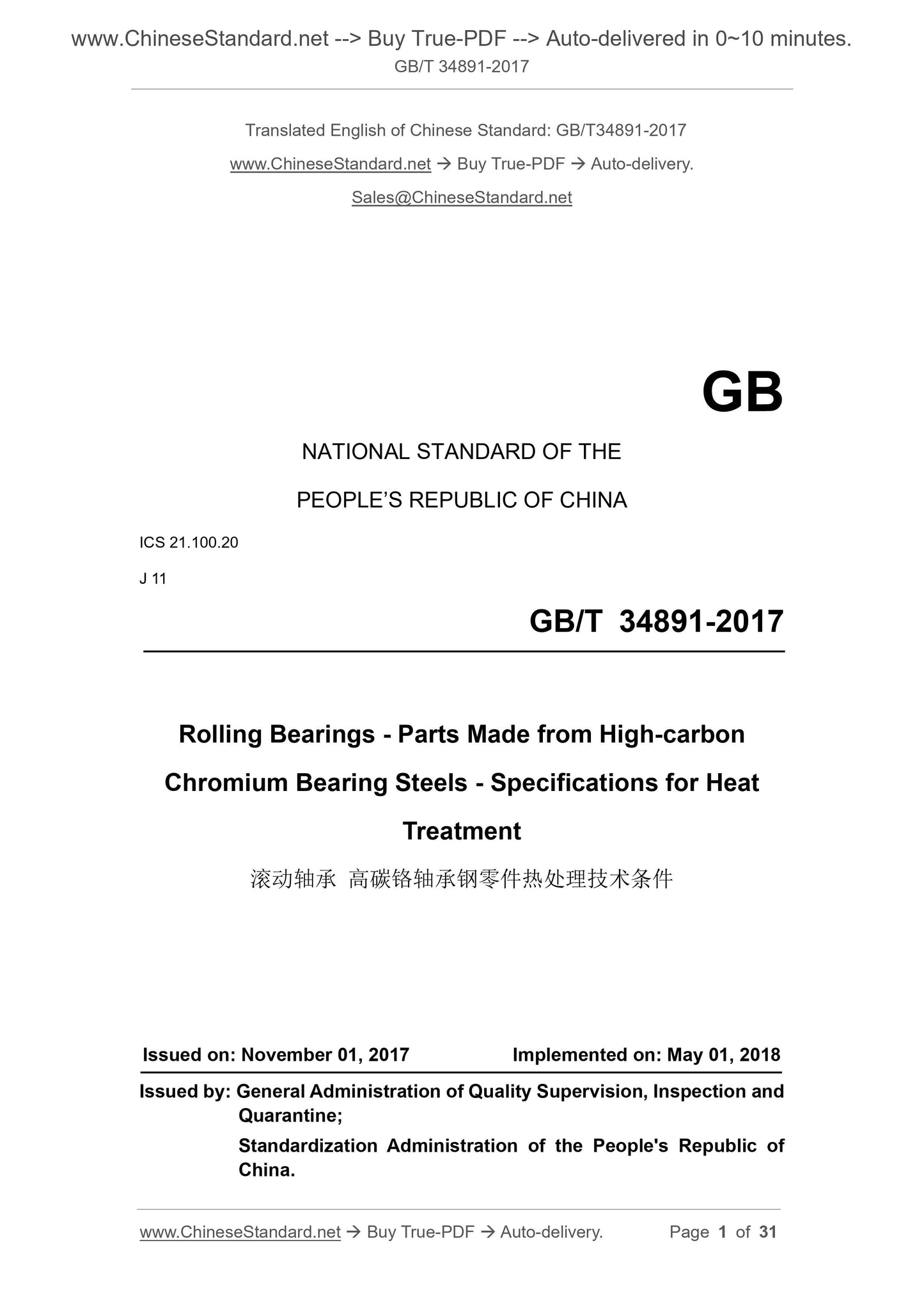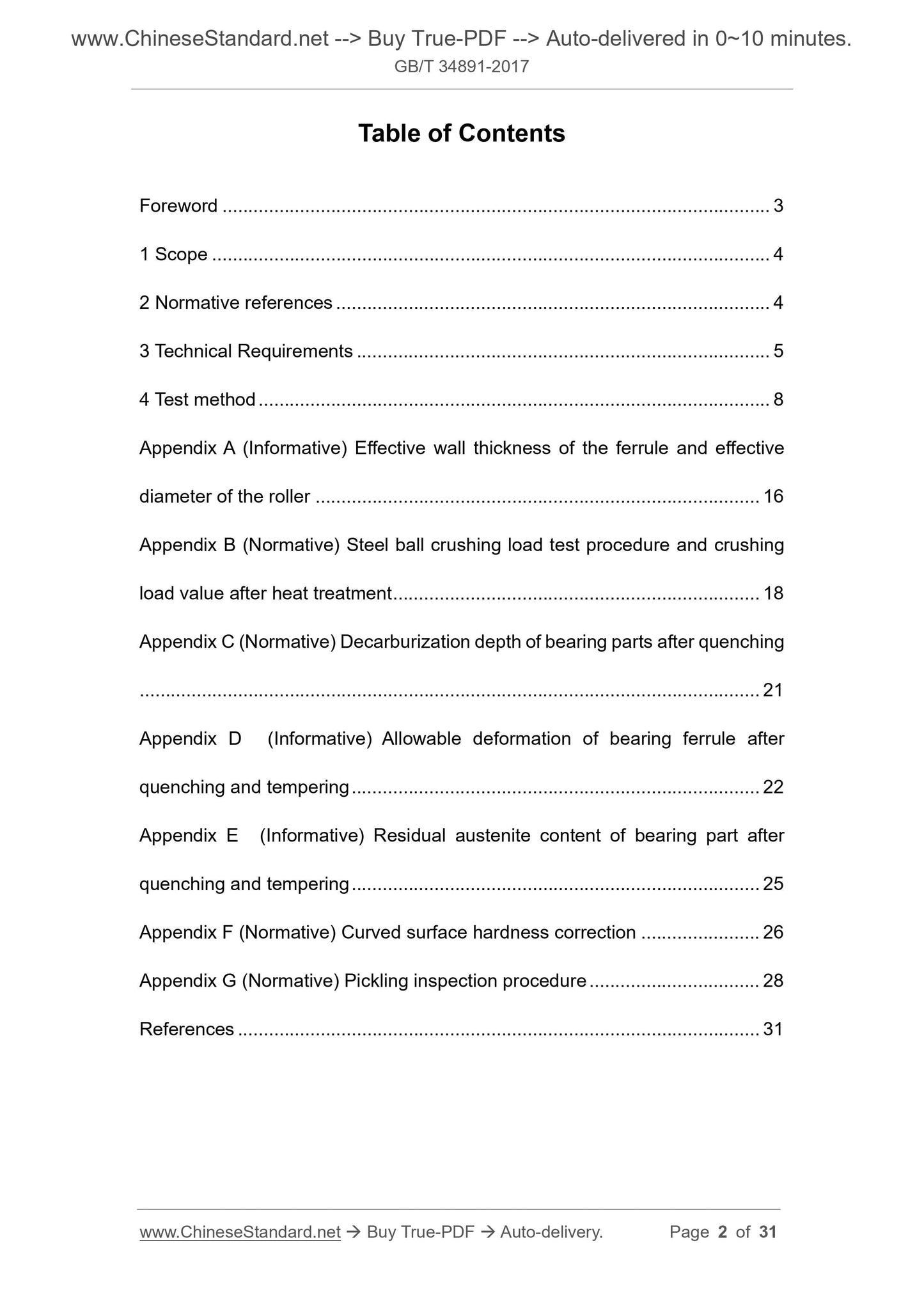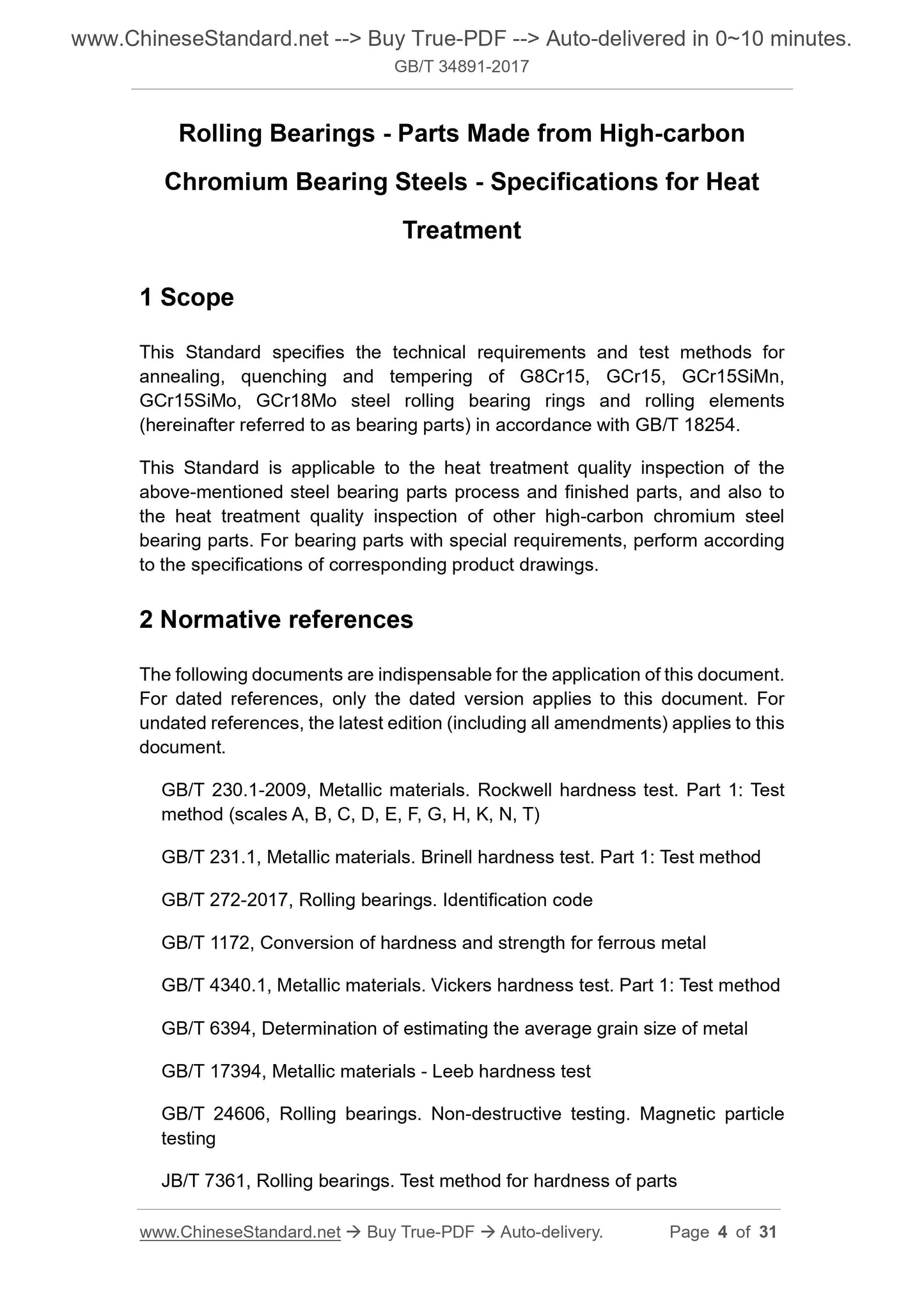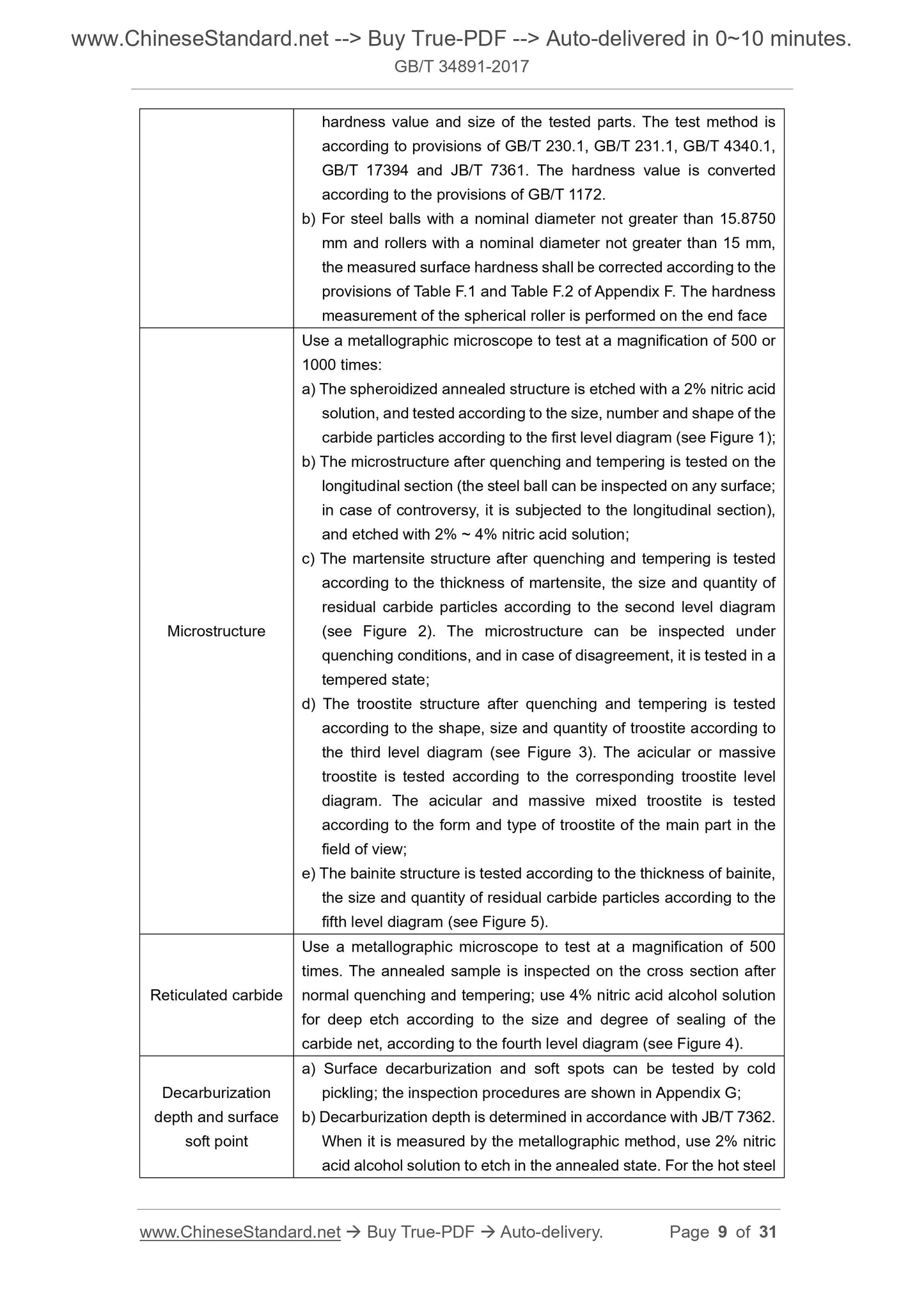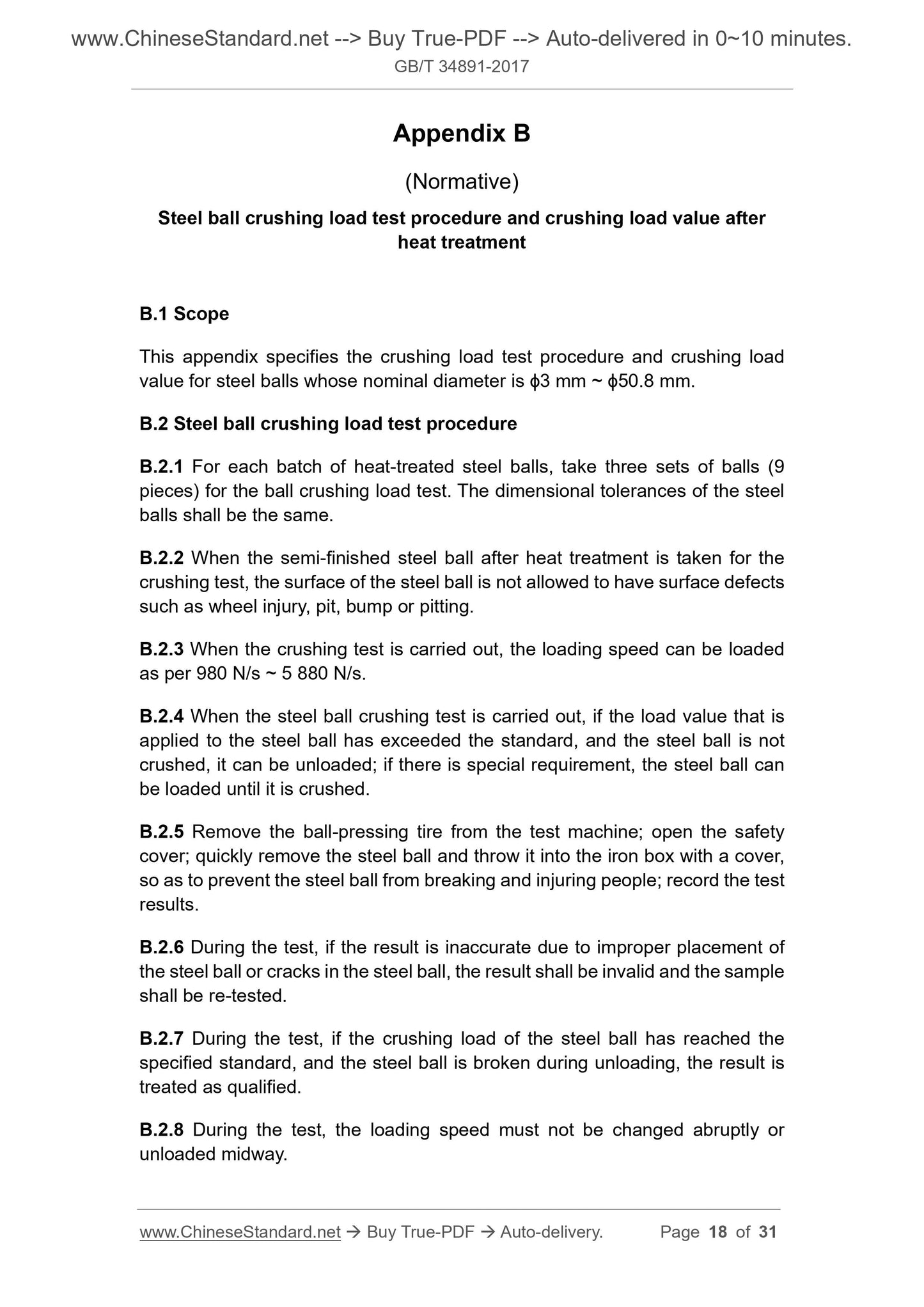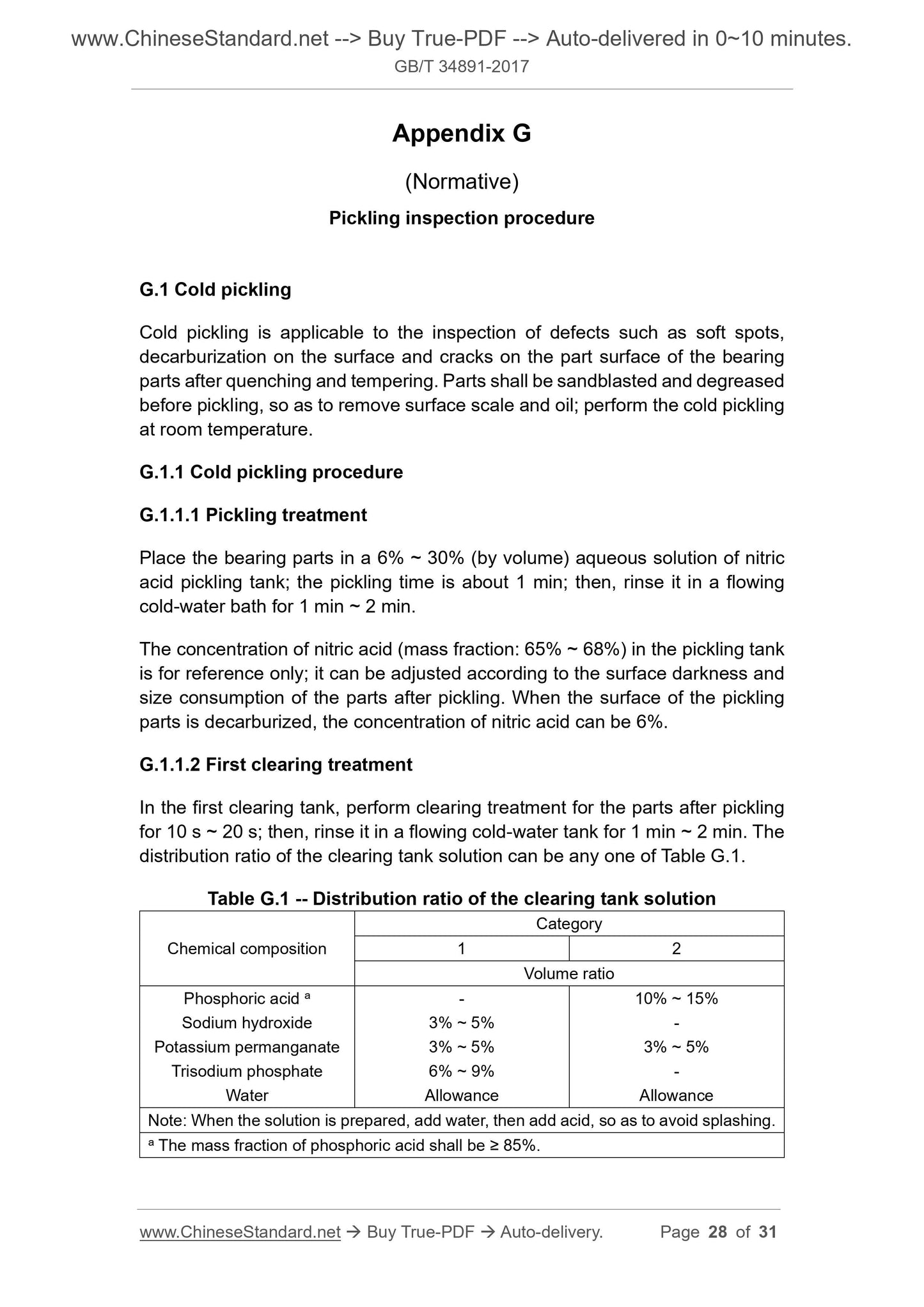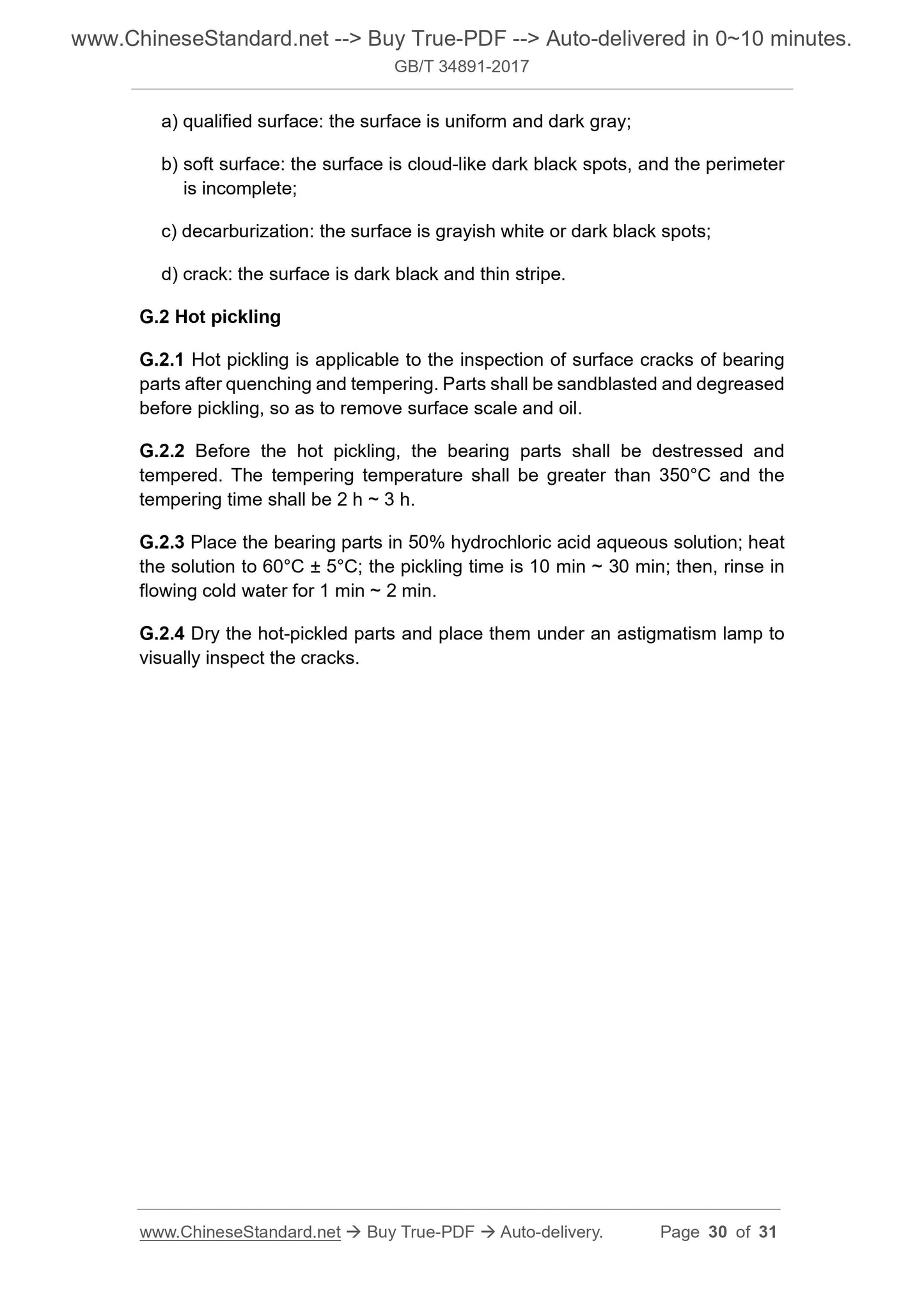1
/
of
7
www.ChineseStandard.us -- Field Test Asia Pte. Ltd.
GB/T 34891-2017 English PDF (GB/T34891-2017)
GB/T 34891-2017 English PDF (GB/T34891-2017)
Regular price
$165.00
Regular price
Sale price
$165.00
Unit price
/
per
Shipping calculated at checkout.
Couldn't load pickup availability
GB/T 34891-2017: Rolling Bearings - Parts Made from High-carbon Chromium Bearing Steels - Specifications for Heat Treatment
Delivery: 9 seconds. Download (and Email) true-PDF + Invoice.Get Quotation: Click GB/T 34891-2017 (Self-service in 1-minute)
Newer / historical versions: GB/T 34891-2017
Preview True-PDF
Scope
This Standard specifies the technical requirements and test methods forannealing, quenching and tempering of G8Cr15, GCr15, GCr15SiMn,
GCr15SiMo, GCr18Mo steel rolling bearing rings and rolling elements
(hereinafter referred to as bearing parts) in accordance with GB/T 18254.
This Standard is applicable to the heat treatment quality inspection of the
above-mentioned steel bearing parts process and finished parts, and also to
the heat treatment quality inspection of other high-carbon chromium steel
bearing parts. For bearing parts with special requirements, perform according
to the specifications of corresponding product drawings.
Basic Data
| Standard ID | GB/T 34891-2017 (GB/T34891-2017) |
| Description (Translated English) | Rolling Bearings - Parts Made from High-carbon Chromium Bearing Steels - Specifications for Heat Treatment |
| Sector / Industry | National Standard (Recommended) |
| Classification of Chinese Standard | J11 |
| Classification of International Standard | 21.100.20 |
| Word Count Estimation | 24,225 |
| Date of Issue | 2017-11-01 |
| Date of Implementation | 2018-05-01 |
| Regulation (derived from) | National Standard Announcement 2017 No. 29 |
| Issuing agency(ies) | General Administration of Quality Supervision, Inspection and Quarantine of the People's Republic of China, Standardization Administration of the People's Republic of China |
Share
